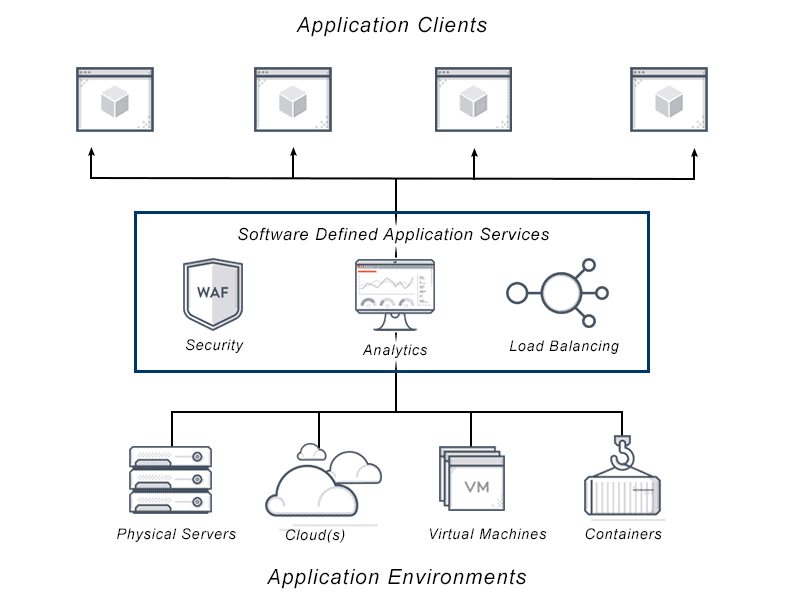Software Defined Application Services Definition
Software-defined application services are more flexible and efficient than hardware appliances or virtual load balancers. A software-defined application services platform provides load balancing, security and application analytics services across a variety of application environments.

What is Software-Defined Application Services?
Microservices architecture uses Software defined application services (SDAS) so modern applications can run efficiently. Traditional applications have monolithic architectures, which allow for a simple delivery process. But the needs for modern applications have become more complicated. Software defined application services allows for easy changes to application delivery architecture.
New business requirements need better application delivery and user experience. Software defined architecture for application services allow automation and self-service capabilities for application developers to focus on application development instead of infrastructure management.
Software defined application services are programmable. They allow for customization of the network services from layer 4 through 7. This includes availability, performance, WAF security, mobility and identity and access control.
Programmable application services can be:
• Modified anytime for cloud computing.
• Provisioned and managed through an open source API.
• Executed with custom business logic and scripted language.
How Do Software Defined Application Services Work?
A software defined application services platform delivers services by separating the control plane from the data plane. A central controller manages load balancers across on-premises data centers and multiple cloud environments.
While traditional application delivery use vertical scaling, software-defined application services rely on horizontal scaling. Vertical scaling adds more power (CPU, RAM) to an existing machine. Horizontal scaling adds more machines into a pool of resources.
A software defined architecture for application services scales capacity automatically as it load balances traffic.
Benefits of Software-Defined Application Services
Traditional application delivery platforms fail to meet the needs of cloud-native applications in public clouds. A software defined architecture for application services offers the flexibility, scalability, performance monitoring and automation that modern applications require. The benefits of a software application services platform include:
• More cost-effective network services when the control and data planes can run on commodity servers.
• Consistency across different cloud environments when the data plane can be deployed on containers or physical servers.
• Easier horizontal scaling when load balancing services can be distributed close to each application at the date plane.
• Continuous analysis of application performance in real time with load balancers located in the path of application traffic.
Does Avi Network offer Software Defined Application Services?
Yes. Avi Networks offers modern load balancing with software-defined application services. Avi Networks delivers multi-cloud application services with elastic application delivery, security, and pervasive analytics across data centers and clouds. Avi makes it easy to apply load balancing, web application firewall and service mesh to any application.
For more on the actual implementation of load balancing, security applications and web application firewalls check out our Application Delivery How-To Videos.
For more software-defined application services resources see the following: